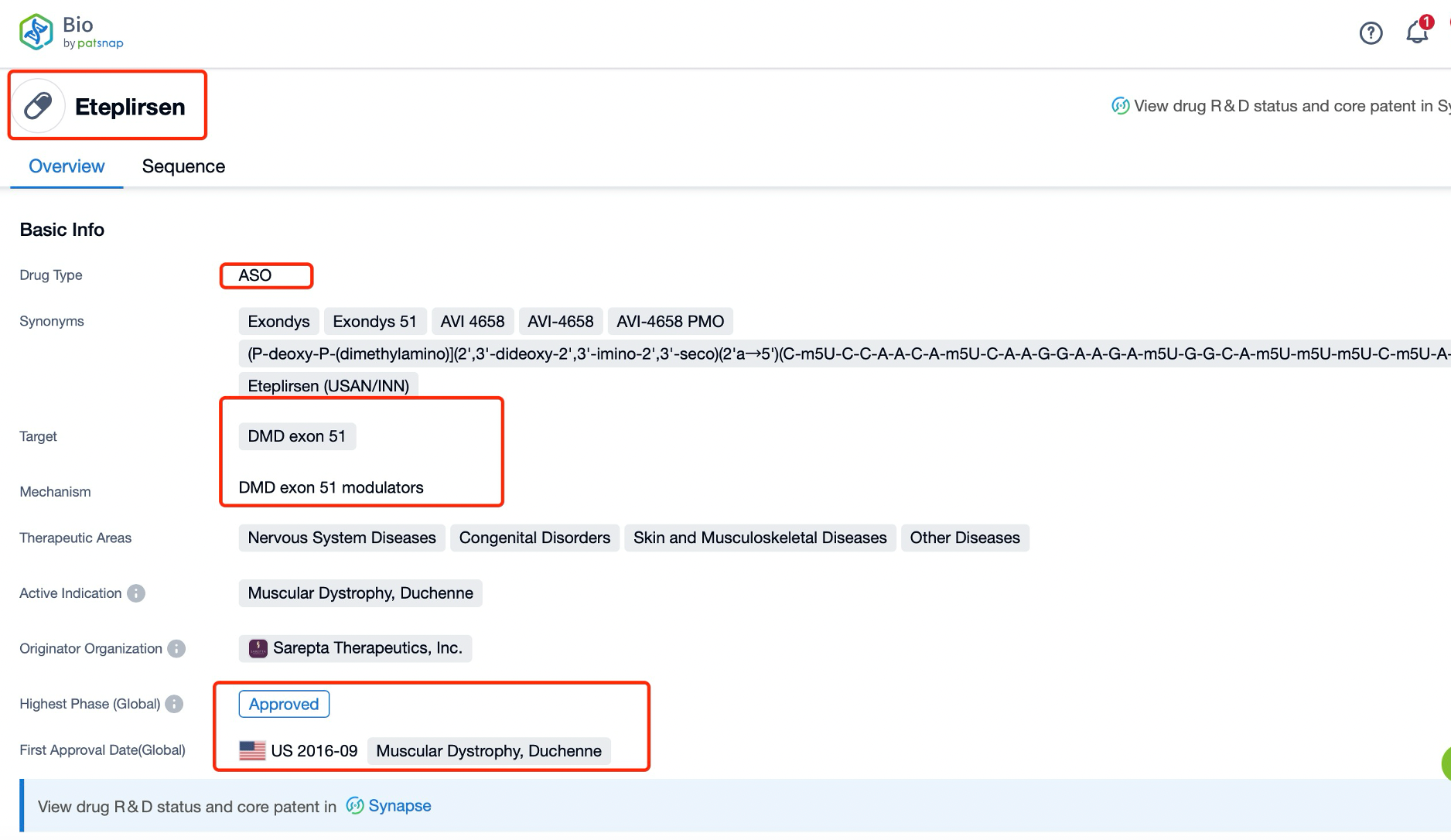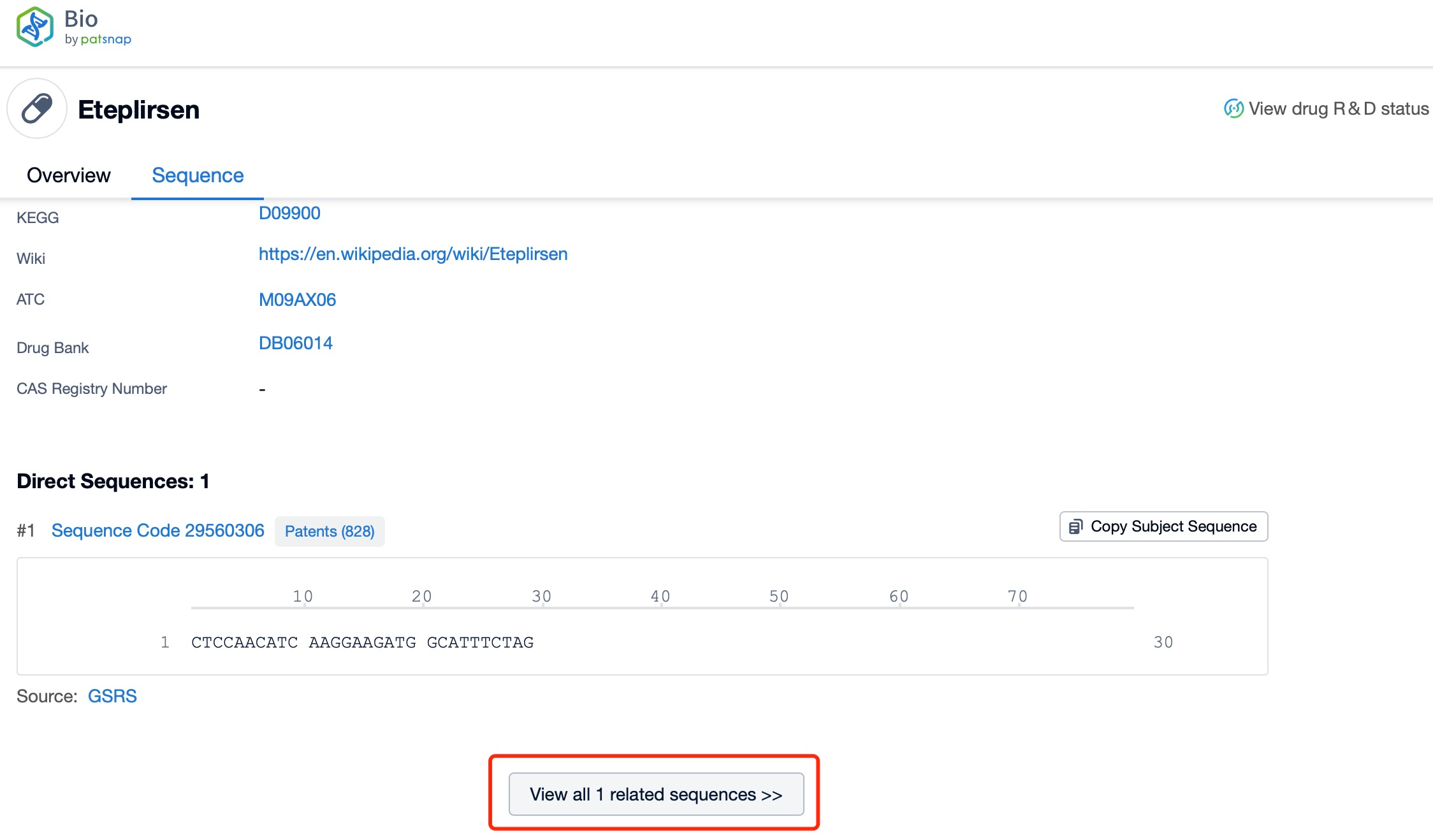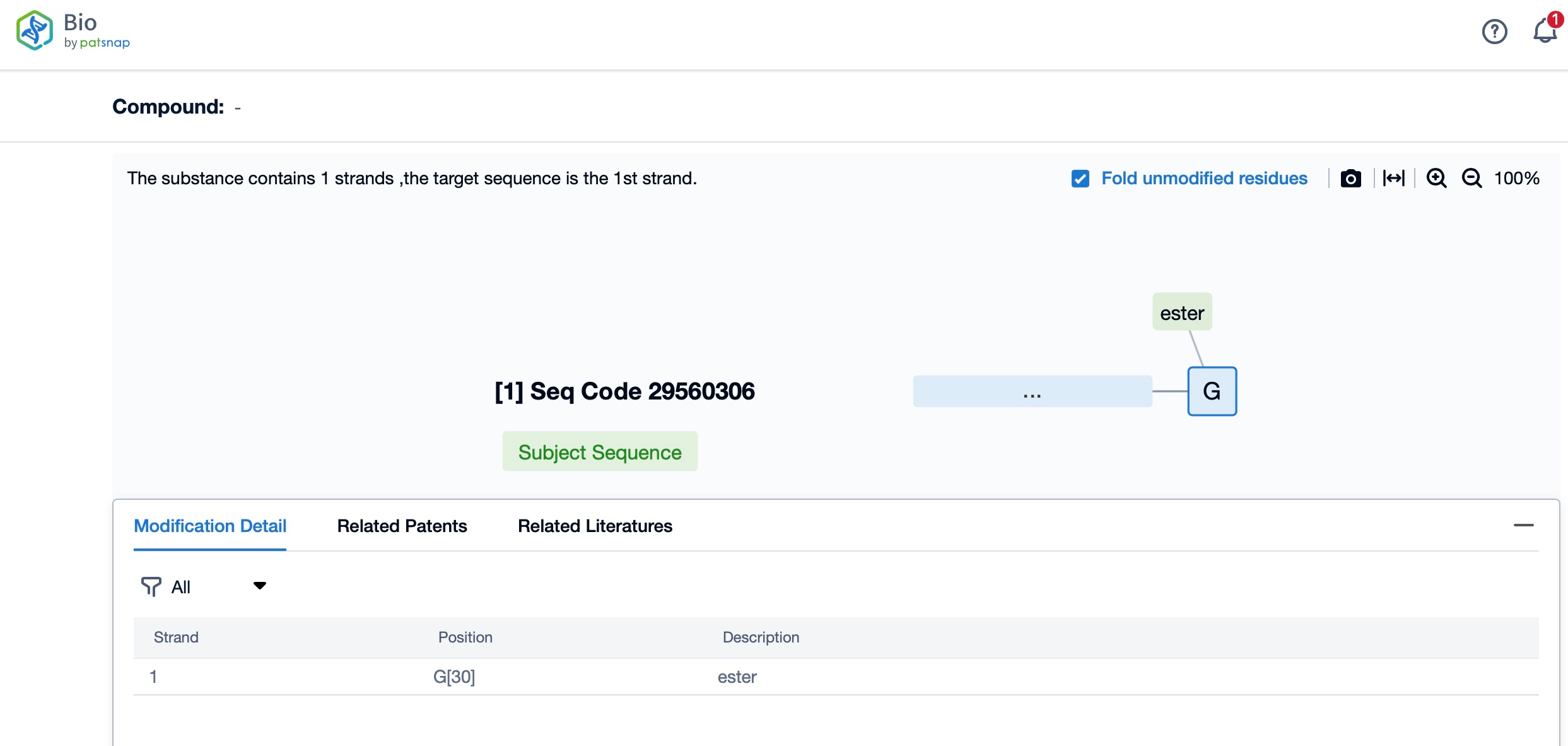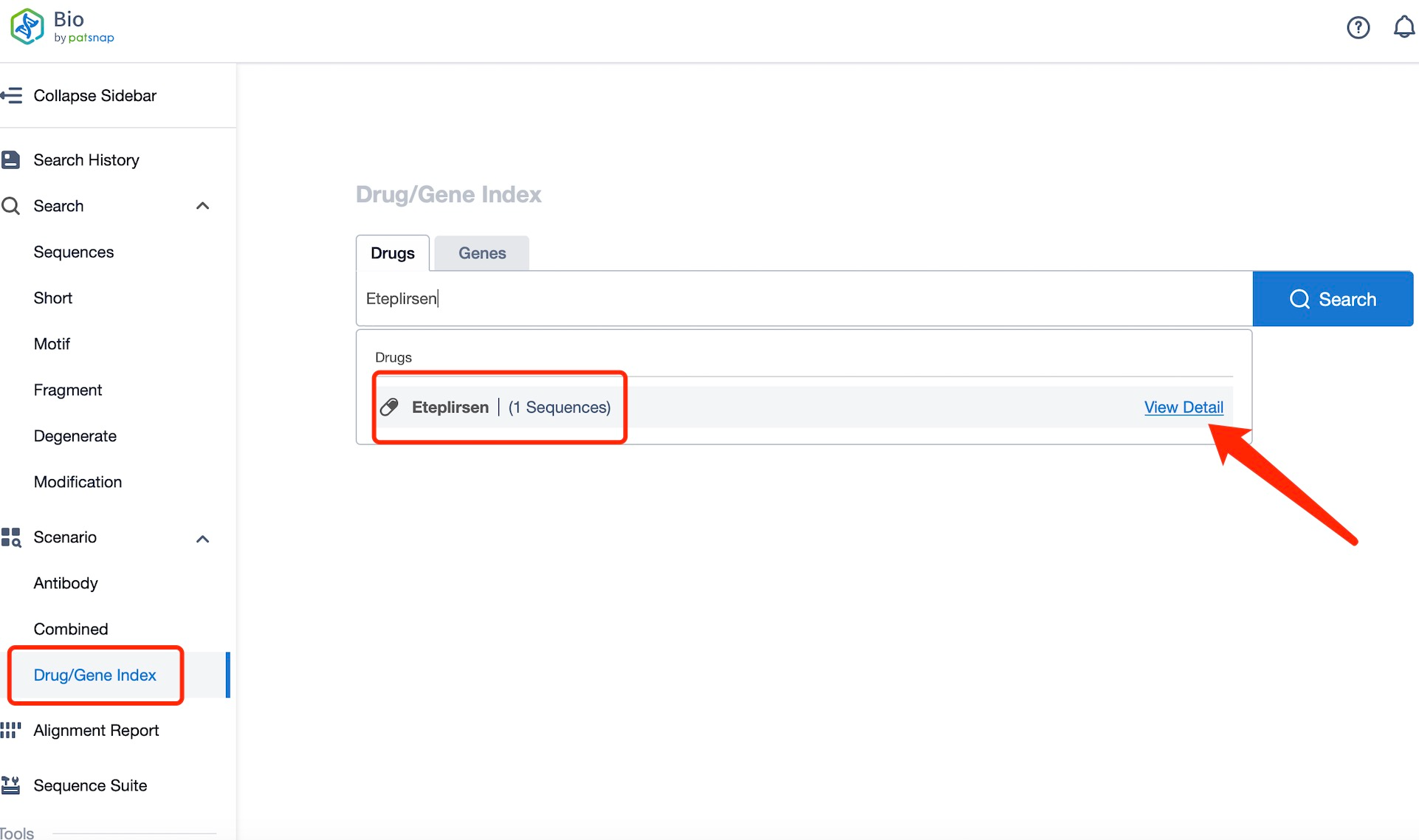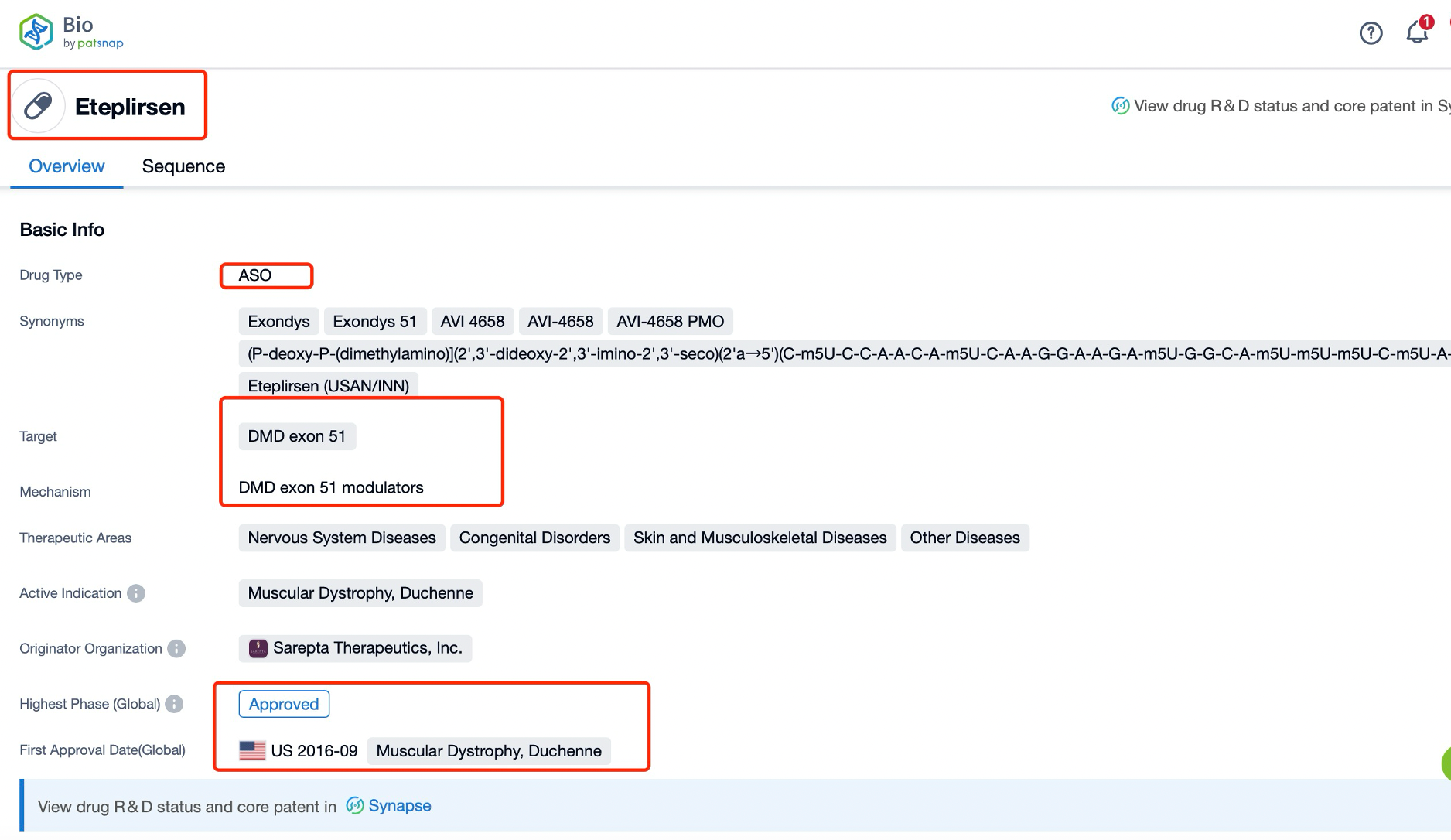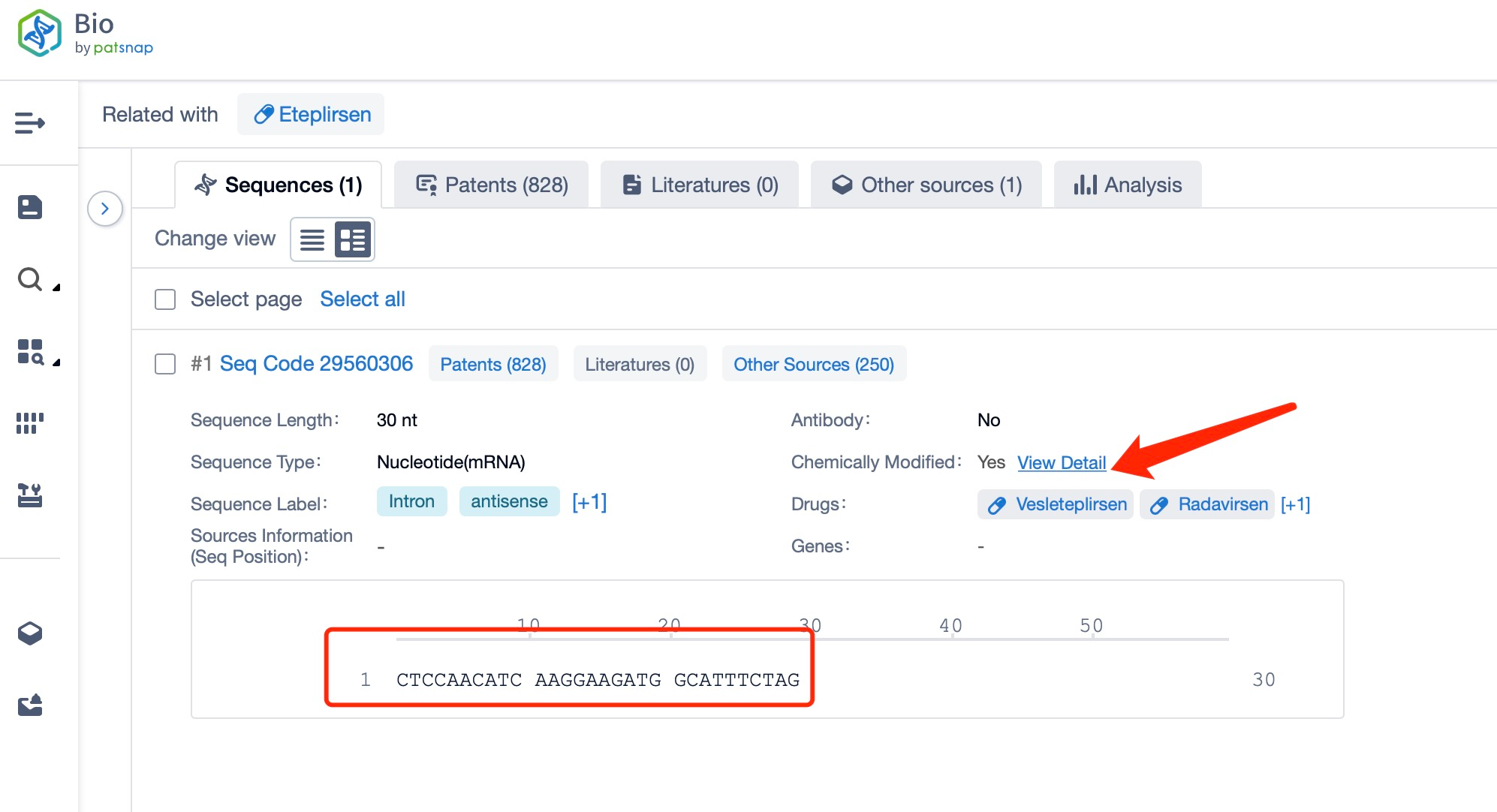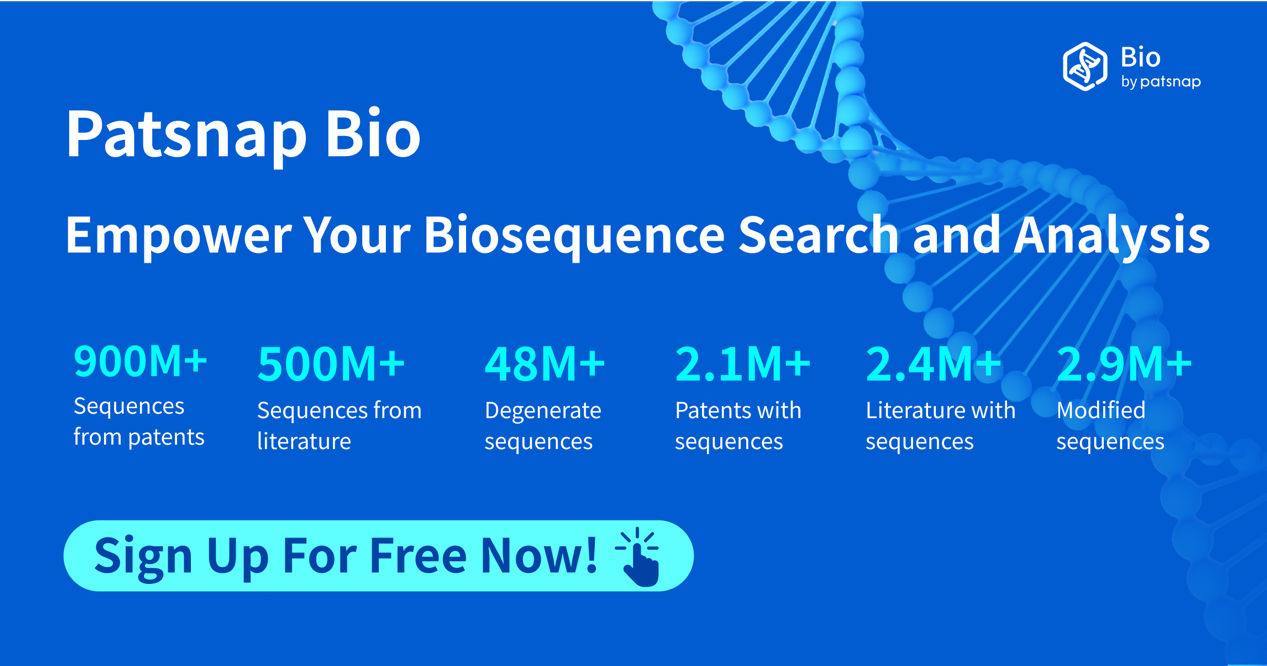How to find the sequence of Eteplirsen?
Eteplirsen, developed by Sarepta Therapeutics, is an antisense oligonucleotide that targets the dystrophin gene. Specifically, it skips exon 51 during the splicing process, allowing the production of a truncated but functional dystrophin protein. Dystrophin is a protein essential for muscle fiber stability and function. Mutations in the dystrophin gene lead to Duchenne muscular dystrophy (DMD), a severe and progressive muscle-wasting disease primarily affecting boys. Eteplirsen is primarily indicated for the treatment of DMD in patients who have a confirmed mutation of the dystrophin gene amenable to exon 51 skipping, which accounts for approximately 13% of DMD cases.
Summary of Research Progress of Eteplirsen
Eteplirsen works by binding to the pre-mRNA of the dystrophin gene at a specific site, causing the splicing machinery to skip exon 51. This allows the remaining exons to be joined together in a way that restores the reading frame, leading to the production of a shorter but still functional dystrophin protein. By addressing the underlying genetic defect, eteplirsen aims to slow the progression of muscle degeneration and improve muscle function in DMD patients. Eteplirsen is administered intravenously, and it has been approved by the U.S. Food and Drug Administration (FDA) under accelerated approval based on its ability to increase dystrophin production. However, the drug's clinical benefits are still under evaluation in ongoing confirmatory trials.
Globally, the competition in the DMD market is significant, with several companies developing novel therapies. Eteplirsen faces competition from other antisense oligonucleotides, such as golodirsen (Vyondys 53) and viltolarsen (Viltepso), which target different exons in the dystrophin gene. These drugs are also approved for specific subsets of DMD patients. Additionally, there are gene therapy approaches, such as those being developed by Pfizer and Solid Biosciences, which aim to deliver a functional dystrophin gene directly to muscle cells. Despite this competition, eteplirsen offers a unique advantage with its established safety profile and ongoing clinical trials that continue to evaluate its long-term efficacy and safety.
Clinical research on eteplirsen has shown mixed results, with some studies demonstrating increases in dystrophin production and improvements in muscle function, while others have reported more modest benefits. The Phase 3 ESSENCE trial, which is ongoing, is evaluating the long-term safety and efficacy of eteplirsen in a larger cohort of patients. Preliminary data from earlier trials have shown that eteplirsen can increase dystrophin levels in muscle biopsies and may improve motor function in some patients. The drug was generally well-tolerated, with common side effects including injection site reactions and mild to moderate kidney-related issues. Ongoing and future trials aim to further evaluate the long-term safety and efficacy of eteplirsen, as well as explore its potential in combination with other therapies to achieve better outcomes.
Sequence Characteristics of Eteplirsen
Eteplirsen is a 30-nucleotide phosphorothioate-modified oligonucleotide. The sequence of eteplirsen is specifically designed to bind to the pre-mRNA of the dystrophin gene at a site that includes exon 51. This sequence is optimized to ensure high specificity and efficiency in targeting the pre-mRNA, which is crucial for the drug's therapeutic efficacy and safety. The precise sequence of eteplirsen is a proprietary information, but it is known to be highly complementary to the target pre-mRNA, allowing for effective exon skipping and restoration of the reading frame.
Chemical Modification and Species of Eteplirsen
The chemical modifications in eteplirsen include phosphorothioate linkages. The phosphorothioate backbone replaces one of the non-bridging oxygen atoms in the phosphate group with a sulfur atom, enhancing the stability of the oligonucleotide and protecting it from nuclease degradation. This modification is crucial for the drug's ability to reach and bind to the target pre-mRNA in muscle cells. The phosphorothioate backbone also improves the pharmacokinetic properties of the drug, such as its half-life and tissue distribution, which are important for its therapeutic effectiveness.
The phosphorothioate modifications in eteplirsen provide several key advantages. First, they significantly enhance the stability of the oligonucleotide, allowing it to remain active in the cellular environment for a longer period. This increased stability is crucial for the drug's effectiveness in binding to and modifying the pre-mRNA. Second, the phosphorothioate backbone improves the pharmacokinetic profile of the drug, increasing its half-life and bioavailability. This means that the drug can be administered less frequently, which is beneficial for patient convenience and compliance. Third, the phosphorothioate modifications reduce the risk of off-target effects by enhancing the specificity of the oligonucleotide for its target pre-mRNA.
The role of the phosphorothioate modifications in eteplirsen is multifaceted. They protect the oligonucleotide from degradation by nucleases, ensuring that it can reach its target in muscle cells. They also enhance the binding affinity of the oligonucleotide to the pre-mRNA, ensuring efficient and specific exon skipping. Additionally, the phosphorothioate modifications improve the pharmacokinetic properties of the drug, such as its half-life and tissue distribution, which are essential for its therapeutic effectiveness. These modifications also reduce the immunogenicity of the oligonucleotide, minimizing the risk of adverse immune responses.
Summary
In summary, eteplirsen represents a significant advancement in antisense technology and the treatment of Duchenne muscular dystrophy (DMD). Its mechanism of action, involving the skipping of exon 51 in the dystrophin pre-mRNA, has shown promising results in increasing dystrophin production and improving muscle function in affected patients. Despite facing competition from other antisense oligonucleotides and gene therapies, eteplirsen offers a unique advantage with its established safety profile and ongoing clinical trials that continue to evaluate its long-term efficacy and safety. Future research aimed at improving delivery methods and exploring combination therapies could further enhance its clinical utility. The sequence characteristics and chemical modifications of eteplirsen, including its phosphorothioate backbone, contribute to its stability, specificity, and efficacy, making it a valuable tool in the management of DMD.
How to find the sequence of an ASO?
In Patsnap Bio, you can find the sequence and latest research and development advances of all ASOs.
Taking eteplirsen as an example, first click on the Drug/Gene Index on the Patsnap Bio homepage. Here you can search for sequence information by drug and gene names. Enter ' eteplirsen ' in the search box and click to view the details. On the details page, you can find the basic information and research progress of eteplirsen.
Click "View all related sequences" below the sequence information to search for and retrieve all biological sequences similar to this information.
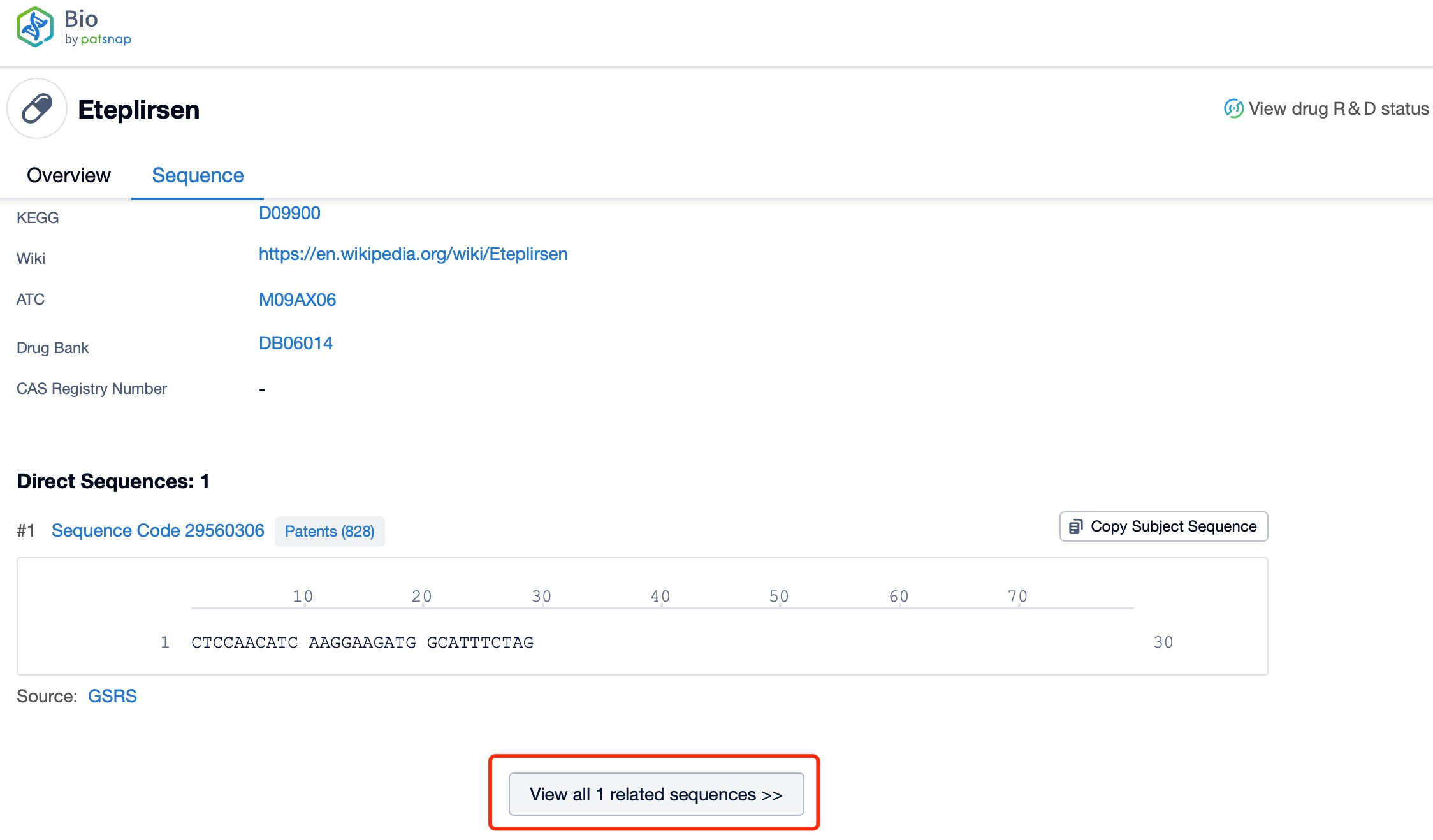 Clicking on the sequence name will provide you with all the basic information of that sequence.
Clicking on the sequence name will provide you with all the basic information of that sequence.
Patsnap Bio helps you turn weeks into minutes with cutting-edge AI-enabled tools built to master the complexities of sequence retrieval and automate IP analysis with precision and ease.
